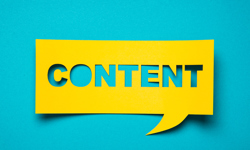Q. How can we tempt advertisers who haven't yet put their trust in digital and who currently feel safer in print?
A. I think this is all about developing those relationships. With digital, you’re working to extend the reach of your publication, serving your audience across platforms. That’s a direct benefit for your advertisers, but it takes money and time and you’re asking them to invest in the development process and in your relationship. The worst thing to do is to position digital as a replacement for print; they trust you in print, why make them worry that it’s going away? Also, be as open as you can be and manage expectations; it’s not uncommon for people to get over excited with digital.
Q. In your experience, which new digital products are delivering the best commercial returns for traditional print publishers?
A. Maybe not the sexiest, but probably newsletters. They’ve been around forever; I think people see them as safe, measurable, visible. The costs are very manageable - an automated email newsletter is pretty easy to set up, populate with content repurposed from other parts of the publishing operation, and place a variety of ad units. Newer personalisation and targeting technologies, even programmatic advertising, will add another level to email newsletters, bringing in more niche opportunities and broader network revenues.
Q. How long do you think you should work on a digital project before you see profit?
A. If you see the project as developing a robust, profitable, digital layer to your publishing business, then it will never stop. If you’re talking about the individual projects that make up that digital layer, I actually think growth is a better metric than profitability in the first instance. If your project is adding revenue and customers month to month, and your direction of travel is positive, stick with it. If you’re not seeing any revenue or traffic growth then probably only stick with it long enough to understand why; squeeze all the learning you can out of the situation and then move on.
Q. Would you say that money, traffic, attention and learning are in fact all objectives in their own right?
A. Yes, absolutely. Each of these could be legitimately written into a business plan as a valid project objective. That’s really the point I was trying to make in the webinar – too many digital projects are started without any clear objectives. It’s almost as if publishers think that creating a digital product is an objective in itself. It’s not, it’s a starting point. The ultimate objective is to build a profitable, sustainable publishing business - digital products are tactics that, done well, can help achieve that.
Q. What digital launches have most impressed you in the past 12 months?
A. This is such a difficult question, partly because what impresses at launch might not be around 12 months later. The best example I have of that is the Ernest Journal iPad edition. Ernest Journal is an independent magazine, produced bi-annually in print and monthly on the iPad. The digital edition is every bit as beautiful as the print; fresh, clean, interesting. But the changes to Adobe’s DPS licensing mean that the publishers, even although they’ve made a beautiful award-winning publication, are having to think really hard about its future affordability. I guess what impresses me is any launch that has thought hard about what the audience wants and works to serve them across all relevant platforms; what really impresses me is when publishers make it through their first 12 months.
Q. Any tips on making money out of Twitter - rather than spending on it?
A. I’ve mostly thought of Twitter as a way for publishers to extend reach, amplify their content and engage with their audiences. I think the only people really making money out of Twitter directly are service providers, so perhaps the best way for publishers to make money out of Twitter is to put their ‘Marketing Services’ hats on and develop promotional bundles that leverage their Twitter following to reach, amplify and engage their audience with advertiser content. I’d be wary of the hard-sell on Twitter, but it’s perfect for content marketing or native advertising campaigns.
Q. What are your views on turning free online subscribers into paid subscribers?
A. Perfect. Converting free to paid is the holy grail of publishing these days, especially in the context of developing multiple revenue streams. And with free subscribers, in one sense, you’re shooting at an open goal: you know who your audience is and they care enough about you to have registered. But it’s not that easy. The secret is in making the conversion process simple with obvious benefits for the audience in upgrading from free to paid. They need to know exactly what they’ll get for their money; it needs to be something they value; it needs to deliver enough ongoing value to secure renewals.
Q. Where do publishers waste the greatest amount of time with “digital”?
A. Publishers waste time in so many ways. By following trends and building digital products that their audience doesn’t care about. By not collaborating across departments and then having to reverse engineer products to support unconsidered content, commercial or technical requirements. By trying to move too fast and not briefing vendors or development teams properly. By not reviewing user data closely enough for clues on how to fix problems and insight into when to kill a project. And conversely, by over analysing trends and markets, by over specifying and generally over thinking so that nothing ever actually gets released. Digital paralysis might actually be the biggest time waster.
Q. How important is training when embarking on new digital projects?
A. Part of my business is training so… MASSIVELY important! Seriously, good training gives staff confidence. People don’t like change and digital is a big change. The introduction of new digital products can make staff feel uncertain, overworked, even incompetent. Staff have to be trained in the hard skills they need to operate new software or content management systems, but they also need to be trained in the wider context of digital media. Training in the big concepts of multi-platform media resets the dial, it helps staff see the incredible scope of opportunities, and hopefully sparks the entrepreneurial spirit you need to really build those multiple revenue streams – it takes a village to raise a digital portfolio.
Q. What are your views as to the relative merits of flip-page publications and app-based publications?
A. I used to absolutely hate flip-page publications. My business – Flipping Pages Media - is named after the blog that I started specifically to bitch and moan about the shortcomings of flip-page replicas. But some of the software has moved on since 2009, and I think replicas are a valid way for publishers to get into digital publishing. They can never compete with custom digital editions, but they let publishers develop a digital alternative to their print publications without investing heavily in software, design skills and workflow. Just don’t expect for them to make you rich.
Q. Some people suggest responsive web design will kill off magazine apps - what do you think?
A. I honestly don’t know. Logically, any innovation that streamlines workflow and gets publishers closer to COPE (create once publish everywhere) should win. If a responsive website works across all devices, then that sounds like job done. But that doesn’t take into account the true value that can be added through a really well designed app with awesome user experience. I suspect that, eventually, digital publishing technology will develop to a point that web and app workflows are so integrated that the question becomes meaningless to everyone except the development team.
Q. What are some of the ways to gain capital from media sponsorships and partnerships?
A. A sponsorship for me is about hard cash; the sponsor spends money with the publisher to be associated in a fairly high profile way with a particular project. This is what The Week did with Rolex when it launched on the iPad; Rolex spent money to be associated with a free subscriber trial. Partnerships are more about asset sharing. Maybe the partner brings software to the table, maybe audience, maybe content. For a partnership to work 2 + 2 should really equal 5 for both parties for it to work well.
You can view a recording of Peter’s webinar here.












